My adventures in urban wild bee hospitality have appeared on the blog before. Right now, other than some passive carpenter bee action on our shed, I’m out of the bee hotel business. But I’d like to get back into it.
Over my garden travels, I’ve been collecting bee hotel pictures for inspiration. Hoping these inspire you, too. For further reference, download this PDF fact sheet on native bee nests from The Xerces Society. Happily, their Pollinator Conservation Resources page gives both U.S. and Canadian references.
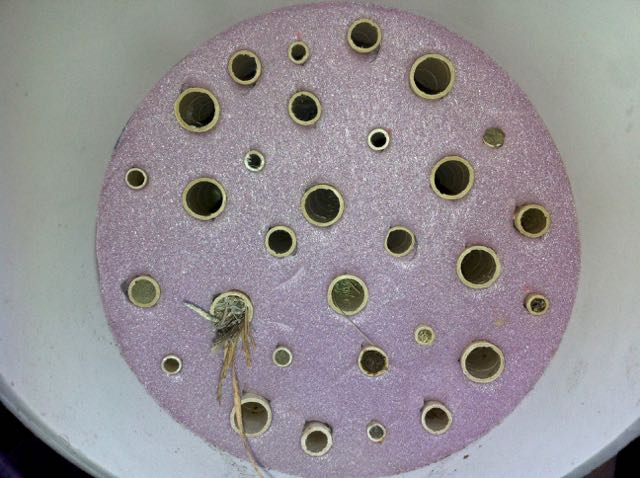
Bees aren’t the only pollinator. Many of the bugs who laid their eggs in my bee nest above were actually wasps, which often get a bad rap. But “bee” is a nice, short, friendly sounding word that telegraphs this type of beneficial insect.
Of course, you can’t have beneficial insects if you use general purpose pesticides, applied with a broad brush.
Pesticides are sometimes necessary. We have a problem with carpenter ants, for example. They love the blue styrofoam insulation in our roof, thinking of it as punky wood, great for a nest. Blue frass was the telltale sign for us.
At first, I stifled my discomfort and found an exterminator (yes, gasp!) that advertised itself as “environmental.” They certainly deterred the ants. However, I discovered they used pyrethrins in their nod to environmentalism. These are organic, derived from a cousin of chrysanthemum, but they’re deadly to all insects – including bees.
We’ve since switched to outdoor borax traps. Not as big of a sledgehammer, but specifically targeted towards the ants. If ants didn’t eat my house, I might live and let live. Sigh.
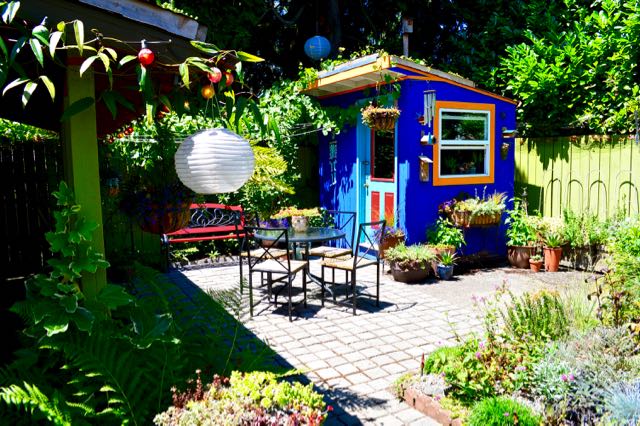
The shots above in the Chickadee Garden in Portland, Oregon, illustrate that a certified pollinator garden doesn’t have to be drab and brown. This bright blue shed with its green roof was a popular photo subject at the Portland Fling in 2014. Look closely at the image on the right. Can you see how many tubes are nurseries for mason bees?
On the lower left, you might note they’ve put wire netting over the holes. It’s a smart way to discourage drilling birds like woodpeckers or even squirrels from trying to excavate the bee larvae.
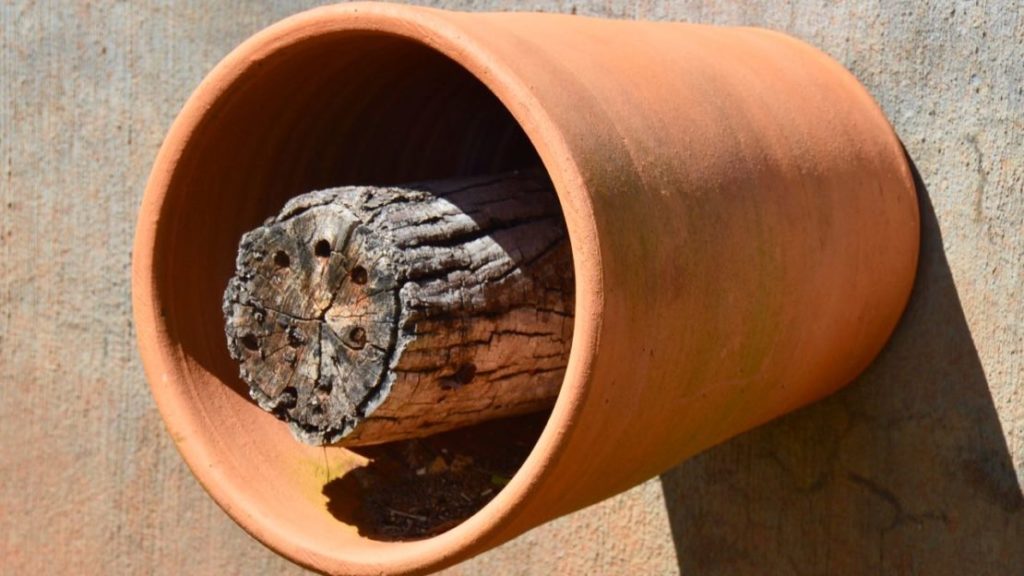
The small bee hotel above is from the State Botanical Garden of Georgia. It might be just as appropriate for Toronto, if you use a frost-proof pot, or maybe even a tin can, as your sun and rain shelter.
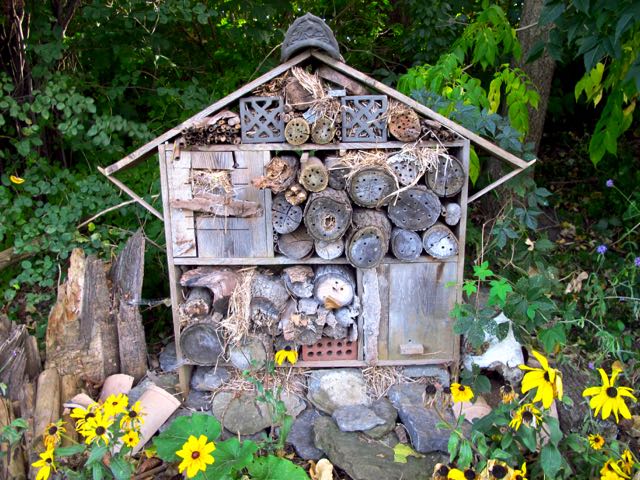
Don’t forget ground-nesting bees in your residential plan for bees in your garden. Bumblebees fall into this category. The big bee condo above stuffs straw under the base, which is one possible nesting strategy for bumblebees. Go back to that PDF shared at the beginning of the post for instructions on building a bumblebee box.
Possibly the most adorable of bees, bumblebees are really in trouble these days. Because they don’t need an artsy nesting box, they can be easily neglected. The Xerces Society gives the thumbs-up to this article from the Mother Nature Network on gardening for bumblebees. One bit of good news: you can help them by simply leaving some areas of your garden messy.
While we’re on that topic, remember that like putting up a birdhouse, or like you’d expect from any hotel you’d visit yourself, bee hotel sanitation is important. The Xerces site has tips on that, too, so we can all bee exceptional hosts.

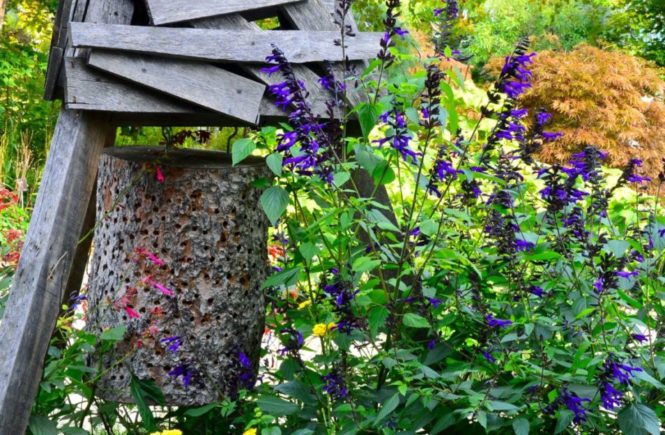
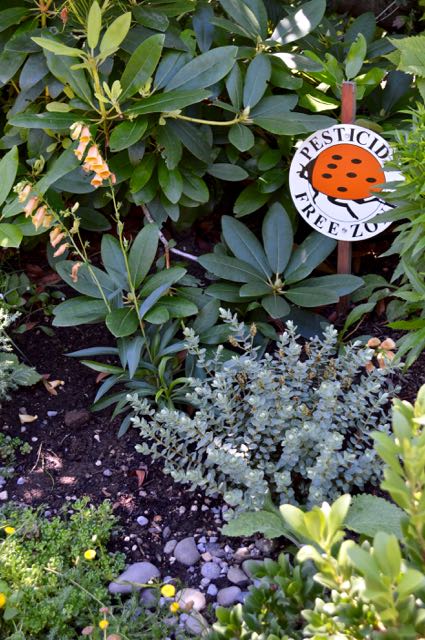
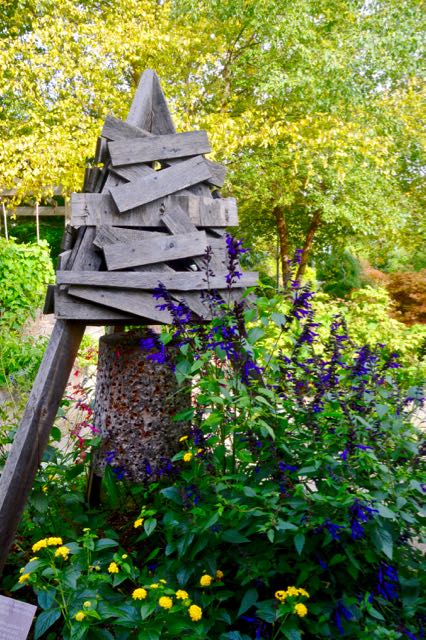
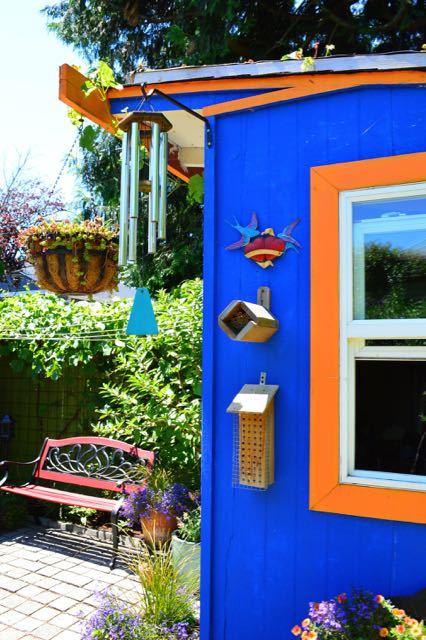
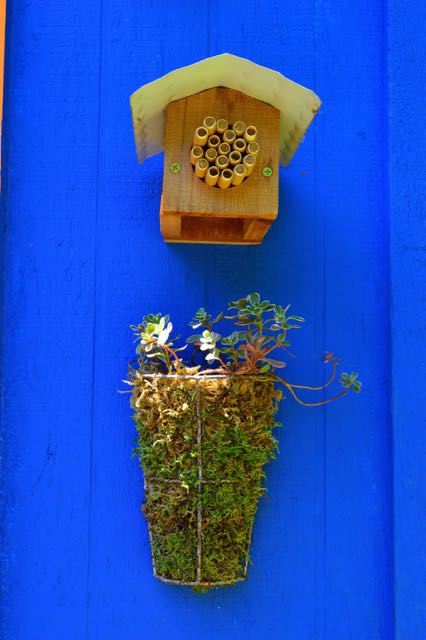


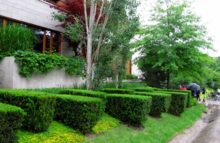
4 comments
Our environment and our pollinators need all the help they can get. This is a great overview of ways to assist. And lovely to see Chickadee Gardens in the mix!
Jane, I’ve been wanting to write about the Chickadee Garden for a long time! It was inspiring to see what they could accomplish in a relatively small space. Plus, I loved their blue shed. Yes, our “meek” need all we can do for them if they are to inherit the earth.
This is one of the best bee posts I’ve seen Helen – so many focus solely on hotels and completely neglect other habitats such as those of ground dwellers. I’m hoping to incorporate more bee friendly habitats into the garden next year and this will be a great reference…so sending you a big thank you 🙂
What a nice thing to hear, Margaret! Thank you. For bumblebees, I forgot to mention that in our love of mulching we should remember to leave some clear ground for bumblebee tunnels in summer. I’ve sometimes spotted a tunnel, just in time.